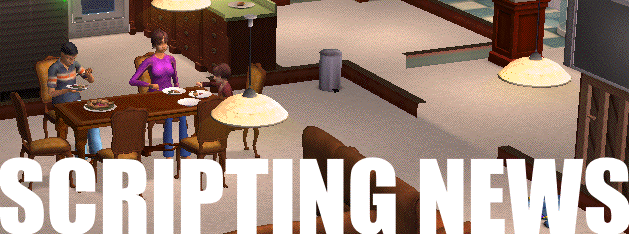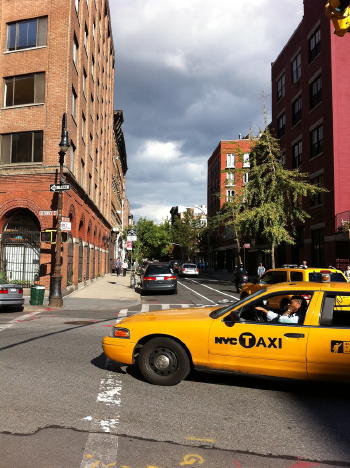
 Saturday after Labor Day bike ride
Saturday after Labor Day bike ride 
Well, it's a Saturday that means the paths are jammed with Sunday riders and people walking four-across.
Seriously these people don't get the meaning of "get the fuck out of my way." It's a crime how they be, I tell you.
But no collisions today. Whew. ![]()
Wore long pants over my bike shorts. Getting a wee bit chilly out there.
At the turnaround point (roughly 96th St) I took a picture with my iPhone 4, upgraded to the 4.1 version of the OS, which is capable of taking pictures that theoretically will blow you away, according to Uncle Steve. You can judge for yourself. (Click on the small versions to get to the full-size ones.)
They look pretty good, but I don't see the difference with these and the old version of the OS. Whatever.
Anyway, here's the map. 1 hour, 10.12 miles.
Had to stop to get my tires filled, accounting for the longish clock time. The good people at Bike and Roll at 43rd were very kind (and competent).
 Rebooting RSS, pulling it together
Rebooting RSS, pulling it together 
 In the discussion under the last two Rebooting RSS pieces there were two key points, both of which, together, give a clear sense of where this is going.
In the discussion under the last two Rebooting RSS pieces there were two key points, both of which, together, give a clear sense of where this is going.
Pito Salas says that the reason Twitter is so easy is that they have subscription down to a single click. Yes indeed. That's something RSS can't do, although in a perfect world it would. It's that ideal that I start the design with.
Winter Seale says that if subscription is to get easy, that feed engines must not just import OPML, they must be able to subscribe to it.
+1
With subscriptions and reading decoupled, we just need to settle on the central place to manage subscriptions. That's the place all the content sites would have to point to, to make subscribing as easy as it is in Twitter. With N possible places to subscribe you get icon hell.
In the first piece in the series, I said it needs to be a foundation that runs this service. Each user has an account, and it serves up OPML to anyone you want it to. There must be lots of competition in all other areas of RSS, but this is the one place where you need to reduce choice, to centralize, to make it simple.
For people like you and me who don't mind a little complexity we can host our subscription lists elsewhere.
BTW, when thinking about this, don't think about RSS as it used to be. Think about it as the way we de-couple Twitter from the servers of a single vendor. When they do things you don't like, think about this reboot. Even if you don't use RSS and OPML, it's going to look like this, if it's not locked up in a single vendor's cloud.
Another point -- even if it's a foundation that runs the central subscription service, it pays to think about 1. Companies that have the technical expertise in building such services, and 2. Content platforms whose support will help bootstrap this service in the field.
In category 1, the one I'm most familiar with is XMarks (formerly FoxMarks when their service only worked with Firefox). They do a fantastic job of centralizing bookmarks. I'm sure there are others. Ultimately the service is going to operate very much like XMarks.
In category 2, the vendors who can provide the initial push to get this working are the blogging tool vendors, WordPress, SixApart, Tumblr, Posterous, etc. And the publications whose content wants to be independent of the companies of Silicon Valley. I know today most of the management at these companies don't see Apple, Twitter, Facebook and Google as a threat. But over time I am positive they will. It'll be good, as that becomes more apparent, to have a network to provide independent support to sources of content and new ways to read it.
 I think the picture is becoming pretty clear, for anyone who is schooled in the technology, and willing to put an hour or so into reading and thinking about it. If you're not convinced, and you like technical puzzles, try to come up with an alternative, and see if it doesn't involve the basic elements outlined here. Centralized subscriptions. A foundation guaranteeing neutrality, with support from the content vendors. If you really think you have one, it's worth a blog post, don't waste the idea on a comment. And shooting from the hip with little or no thought isn't going to get you to the answer.
I think the picture is becoming pretty clear, for anyone who is schooled in the technology, and willing to put an hour or so into reading and thinking about it. If you're not convinced, and you like technical puzzles, try to come up with an alternative, and see if it doesn't involve the basic elements outlined here. Centralized subscriptions. A foundation guaranteeing neutrality, with support from the content vendors. If you really think you have one, it's worth a blog post, don't waste the idea on a comment. And shooting from the hip with little or no thought isn't going to get you to the answer.
And, as always, if you like the way things work now -- the good news is you may get to continue doing it. There are no guarantees as the tech companies who own the all-in-one services have full power to change how they work. This is what gets people riled up about Facebook, and what will get them going about Twitter (reading tea-leaves, first they shook up the developers, next they will have to shake up the users too).
If you study the history of technology, you'll see that it would be unprecedented if the unbundling didn't take place. It always seems to work like this. In the early stages of a technology layer, the industry provides training wheels, all-in-one packages that limit flexibility in favor of simplicity. But eventually two things happen: 1. The companies find they have to make changes to scale the business model, and 2. More and more users get comfortable with the technology and no longer need the training wheels. When these reach critical mass, that's when new layers like personal computers and the World Wide Web are fully realized. Ultimately computers are, imho, about liberating people and ideas. To build layers though we have to accept limits. Its this iterative process that's led us to where we are now.
 OTOH, Flash can reallllly suck
OTOH, Flash can reallllly suck 
 Just so people know that when I say Apple is going to lose the battle with Flash (and I still think they will) that sometimes Flash is the worst thing in the world.
Just so people know that when I say Apple is going to lose the battle with Flash (and I still think they will) that sometimes Flash is the worst thing in the world.
For example the Izod site. It's a Flash nightmare. I go there because I want to buy some shirts. Not have an "experience." Amazon doesn't have the sizes I'm looking for, they used to, but now they don't. So I figure I'll go to the source.
Well if they have what I'm looking for you can't prove it by me. I spent a minute trying to find my way through Men's clothes and gave up. I mean what's so hard about helping a paying customer find what they're looking for? You know, the people who actually buy things that keep you in business?
 Yes, Virginia, there are two ways to read RSS
Yes, Virginia, there are two ways to read RSS 
 When I preach the benefits of River of News, I always get flack about how it's not the only way to read news. I know that. Of course.
When I preach the benefits of River of News, I always get flack about how it's not the only way to read news. I know that. Of course.
Let's spell it out.
The kind of flow almost everyone agrees is suited to River of News are feeds from news orgs like Reuters, the BBC and Guardian, AP, the Washington Post. They're constantly publishing links to stories, many of them different views of the same events. And they repeat. Join all those feeds and that forms the river.
And then there are my friends, Doc Searls, NakedJen, Fred Wilson. People whose every post I want to at least see, if not read. My mother has a blog. When I talk to her on the phone she always asks if I've read her latest posts. I never want to have to say: "No Mom, I must have missed it in my River of News." And then there's Paul Krugman and Simon Johnson, two people I've never met but have enormous respect for. I want to read everything they write.
However, what they have in common is that they update infrequently, and it may be they should just be in a "slow river," together, instead of a mailbox-like approach to feeds as implemented by Google Reader and NetNewsWire. In fact, that's how I make sure I see all the updates for these feeds, by flowing them through a special Twitter account called FriendsOfDave. Until the OAuthcalypse it was implemented as an adjunct to River2, my desktop aggregator. Then I switched to using TwitterFeed, and it works great.
So you may want two or more rivers, that update at different rates.
BTW, this is part of a continuing series on rebooting RSS. There will be more, if there's interest. And when you comment, please try to stay on-topic. If you have something to add to this post, information or a new perspective that's non-obvious, please post a comment. Thanks.





